Discover 15 hidden attractions, cool sights, and unusual things to do in Modena (Italy). Don't miss out on these must-see attractions: Modena Cathedral, Palazzo Ducale, and Ghirlandina. Also, be sure to include Chiesa del Voto in your itinerary.
Below, you can find the list of the most amazing places you should visit in Modena (Emilia-Romagna).
Table of Contents
Modena Cathedral
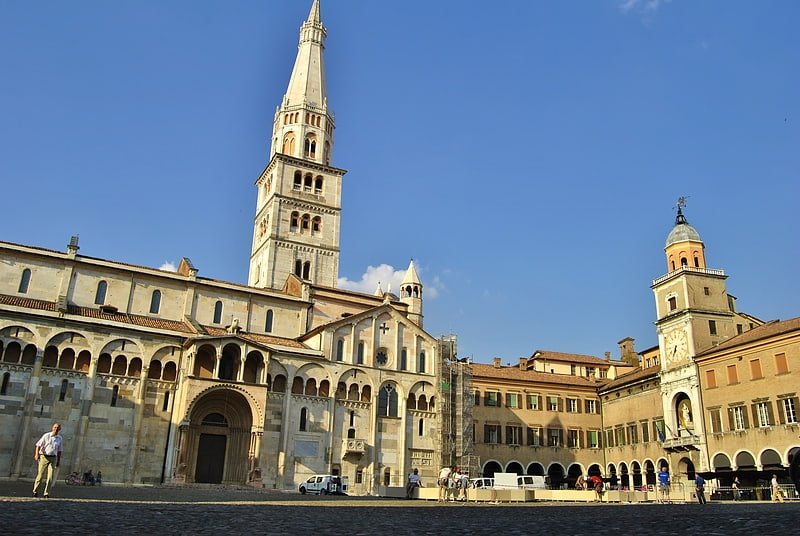
Also known as: Duomo di Modena
Romanesque cathedral with a bell tower. Modena Cathedral is a Roman Catholic cathedral in Modena, Italy, dedicated to the Assumption of the Virgin Mary and Saint Geminianus. Formerly the seat of the Diocese, later Archdiocese, of Modena, it has been since 1986 the archiepiscopal seat of the Archdiocese of Modena-Nonantola. Consecrated in 1184, it is an important Romanesque building in Europe, and along with its bell tower, the Torre della Ghirlandina, is designated as a World Heritage Site.[1]
Address: Corso Duomo, 41121 Modena
Palazzo Ducale
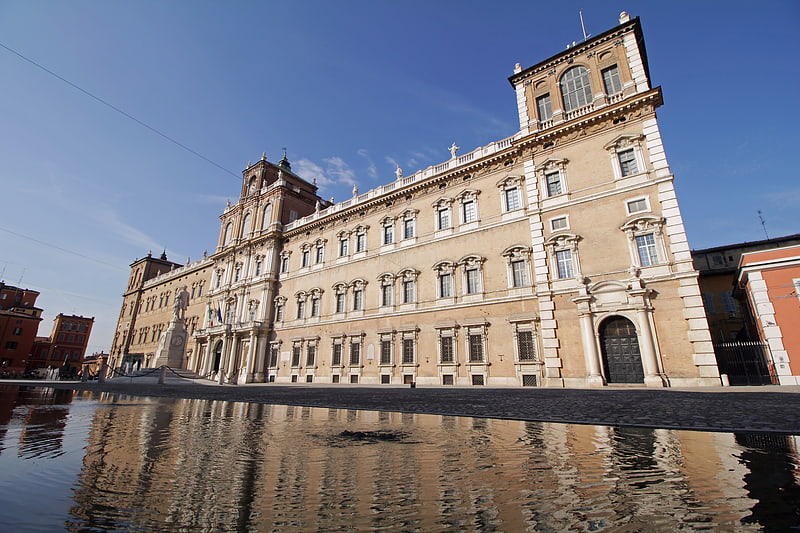
Palace. The Ducal Palace of Modena is a Baroque palace in Modena, Italy. It was the residence of the Este Dukes of Modena between 1452 and 1859. It currently houses a portion of the Italian Military Academy.[2]
Address: Piazza Roma 15, 41121 Modena
Ghirlandina
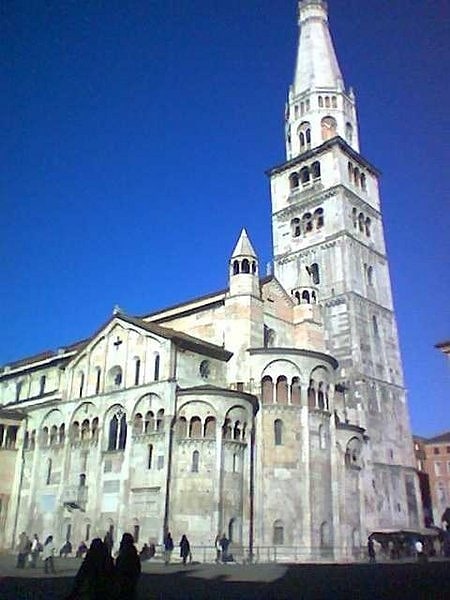
Landmark bell tower with city views. The Torre della Ghirlandina or simply Ghirlandina is the bell tower of the Cathedral of Modena, in Emilia-Romagna, Italy.
Standing at 86.12 metres, the tower is the traditional symbol of Modena, being visible from all directions outside the city.
The structure was set up in 1179 on five floors, initially called Torre di San Geminiano. To compete with Bologna's towers, the Comune added the characteristic octagonal cusp, designed by Arrigo da Campione, one of the numerous masters from Campione who took part in the cathedral's renovation in the 13th-15th centuries. The top of the tower is decorated with two ghirlande (two marble railings), whence the name.
In the interior, the Sala della Secchia room (with 15th-century frescoes) is home of a copy of the depiction of the Secchia rapita, a memory of the tower's former role as treasury of the Modenese Comune. Also notable are the sculpted capitals in the Sala dei Torresani hall, in the fifth floor. The five bells are tuned in C major, cast during the Renaissance period. It also has a stand for the oaken bucket from the War of the Bucket.[3]
Address: Piazza Grande, 41121 Modena
Chiesa del Voto
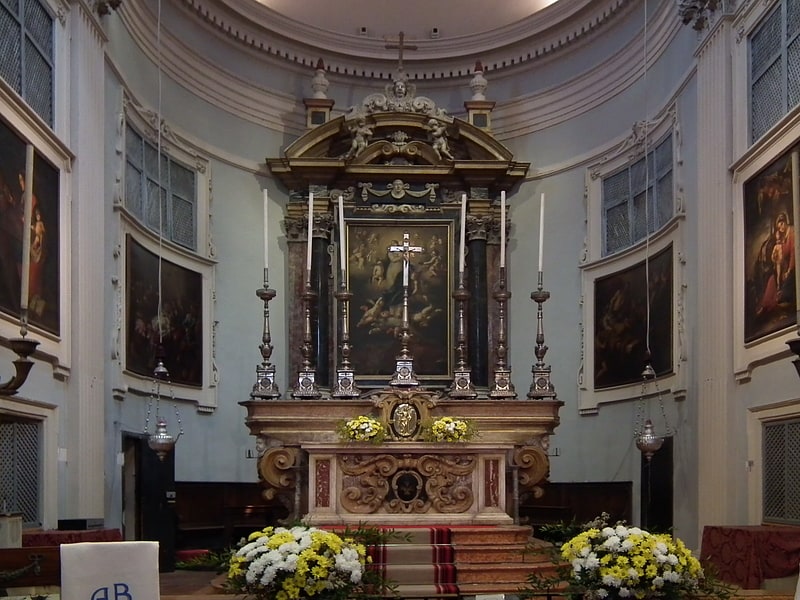
Catholic church in Modena, Italy. The church of Chiesa del Voto or Votive Church of Modena is a Baroque style church in the city of Modena, Italy. It is located near the town center, and was built to give thanks for the cessation of the plague of 1630. Older texts cite a full name of the church of the Madonna Santissima del voto della Città.[4]
Address: Via Emilia Centro, 41100 Modena
Museo Casa Enzo Ferrari
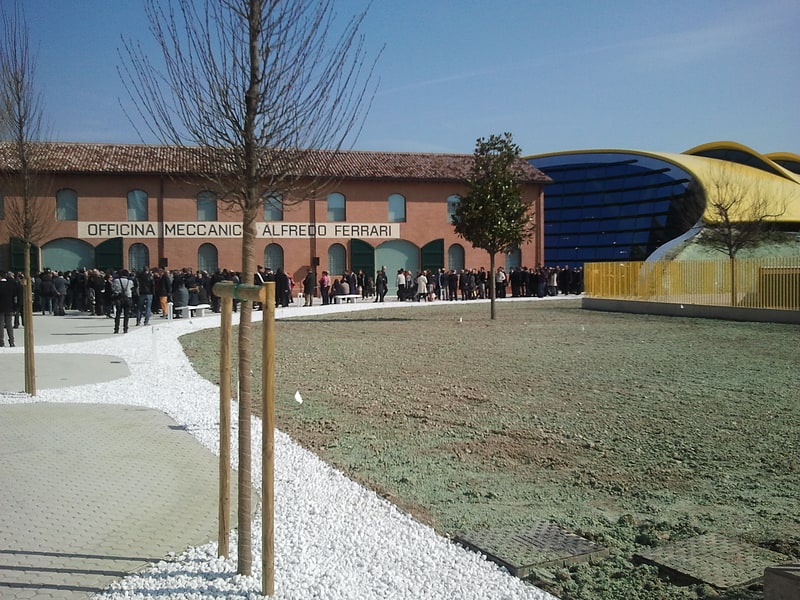
Also known as: Museo casa Enzo Ferrari
Museum in Modena, Italy. Museo Casa Enzo Ferrari is a museum in Modena focused on the life and work of Enzo Ferrari, the founder of the Ferrari sports car marque. The museum complex includes two separate buildings, a former house and workshop that belonged to Enzo Ferrari's father, and a new building designed by the architectural practice Future Systems. The new 6,000 square metres building houses, in a large gallery, a permanent exhibition displaying some of the most noteworthy Ferrari’s automobiles, including rare cars of the 1950s, Formula One race cars and more recent sports cars.
The museum exhibition gallery was substantially renewed and updated in February 2014.
The exhibits feature Ferrari, Alfa Romeo and Maserati cars and also a large video-projection depicting the life of Enzo Ferrari.[5]
Address: Via Paolo Ferrari 85, 41121 Modena
Monumental Temple of St Joseph
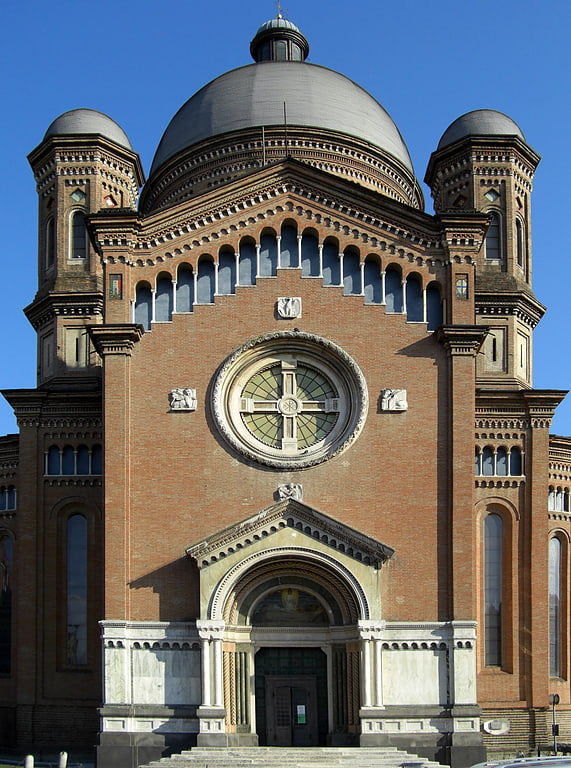
The Tempio Monumentale San Giuseppe or simplified as Tempio San Giuseppe was constructed in Modena, Italy, as a memorial for the 7237 fallen Modenese soldiers in the First World War. It is a Roman Catholic parish. It is located on Piazzale Natale Bruni, just off the Northwest corner of the Este Ducal Gardens, now the University of Modena Botanical Gardens.
The names of the fallen are inscribed in gilded letters on the walls of the crypt. The cornerstone was laid on December 8, 1923, in a ceremony with king Vittorio Emanuele III and Monsignor Natale Bruni, bishop of Modena, presiding. The church was inaugurated on 3 November, 1929. The church was designed by Domenico Barbanti and Achille Casanova. The façade decoration however was not completed till 1931 with engraved bas-reliefs by Adamo and Rubens Pedrazzi. The façade lunette over the portal was frescoed by Evaristo Cappelli, and depicts the Resurrection of Christ and the Nation takes the dead soldiers in its arms.
The layout of the church is a Greek cross, rising in the dome with a diameter of 15.8 meters with four octagonal towers at the corners. The stained glass rose window was designed by Guglielmo Da Re of Milan, and others depicting the four evangelists by Benedetto Boccolari.
The crypt is accessible by a central staircase. The archbishop Natale Bruni is buried in the first chapel on the left, a medallion with his visage was completed by Giuseppe Graziosi. The altar on the right is dedicated to the Madonna of Lourdes and was carved by the sculptor Vigni of Florence. The main altar has a ciborium in part work of the brothers Pedrazzi. To the left of the entrance is the baptistery, the bronze statue of St John the Baptist was sculpted by Graziosi. To the left is a chapel dedicated to those fallen during the Conquest of Ethiopia (1935-37). The Pietà in terracotta was sculpted by Manfredini.[6]
Address: Via Piave 6, 41121 Modena
St. Francis of Assisi Church
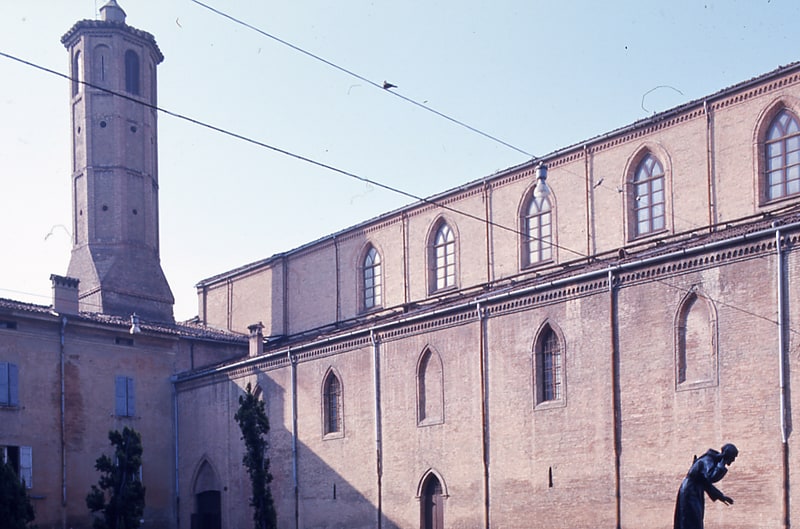
San Francesco is a Gothic-style, Roman Catholic church in central Modena, Italy.[7]
Address: Piazza S. Francesco D'Assisi, 41121 Modena
Chiesa di Santa Maria della Pomposa

Building in Modena, Italy. The church of Santa Maria della Pomposa in Modena, Italy, is an ancient church in the city, once located at the edge of the city walls. Its name derives from the Pomposa Abbey located near the delta of the Po River.
A religious building at the site was documented by 1153. In 1716, the Duke of Modena, Rinaldo I grants the building to his librarian Ludovico Antonio Muratori (1762 - 1750). Deconsecrated in 1774, along with the Aedes Muratoriana was granted by Duke Ercole III to the confraternity of St Sebastian. The church was reconsecrated in 1814. In 1922 Muratori was buried in the church, with a monument by Ludovico Pogliaghi. Among the works inside are a series of canvases depicting the Life of St Sebastian by Bernardino Cervi and an Enthroned Virgin with saints Sebastiano, Rocco, and Geminano by Giovanni Boulanger, copy of a Correggio painting now in Dresden. The adjacent museum celebrates the life and works of Ludovico Antonio Muratori.[8]
Address: Piazza della Pomposa, 41121 Modena
Galleria Estense
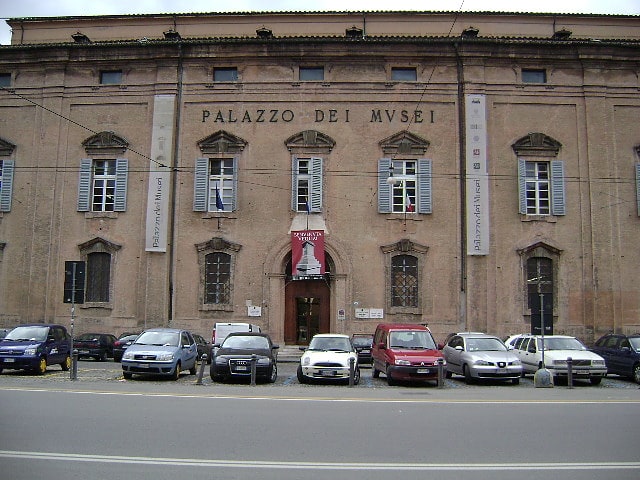
Art museum with Renaissance pieces. The Galleria Estense is an art gallery in the heart of Modena, centred around the collection of the d’Este family: rulers of Modena, Ferrara and Reggio from 1289 to 1796. Located on the top floor of the Palazzo dei Musei, on the St. Augustine square, the museum showcases a vast array of works ranging from fresco and oil painting to marble, polychrome and terracotta sculpture; musical instruments; numismatics; curios and decorative antiques.
It was publicly established in 1854 by the last duke Francesco V of Austria-Este, and was relocated in 1894 to its current situation from the Palazzo Ducale.
Since 2014, the Gallery has formed a part the Gallerie Estensi, an independent complex of museums merging the Estense University library, and the Lapidary Museum in Modena, the Palazzo Ducale in Sassuolo and the Pinacoteca Nazionale in Ferrara. Together, they reflect the progressing tastes of an Italian court of nobility.[9]
Address: Largo Porta Sant'Agostino 337, 41121 Modena
San Pietro Church
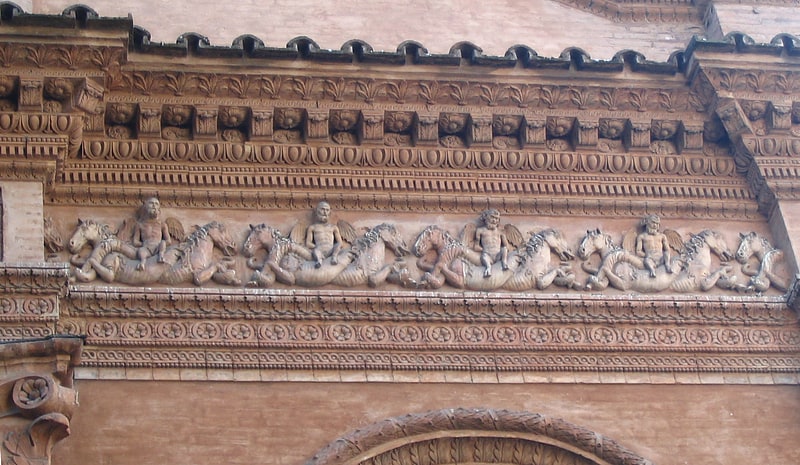
The Monastery and Church of San Pietro is a building complex located on Via San Pietro in central Modena, Italy. The site still hosts an active Benedictine monastery, and the temple now serves as a parish church.[10]
Address: Via S. Pietro, 41121 Modena
Teatro Comunale Luciano Pavarotti
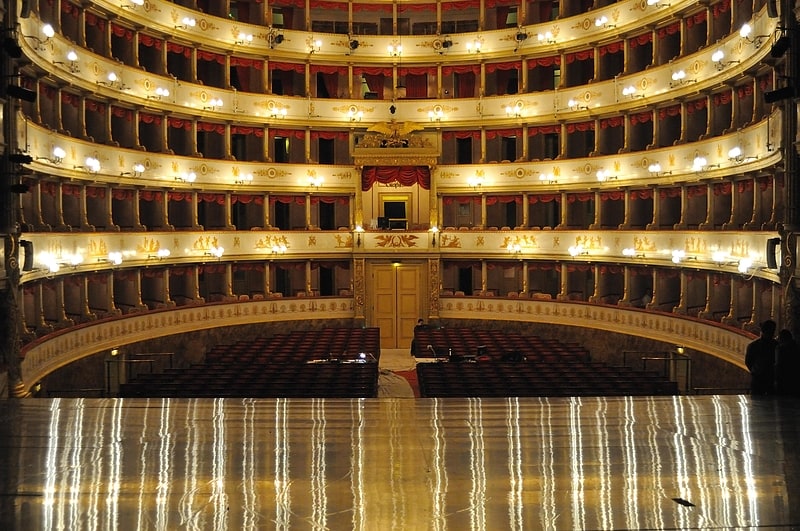
Also known as: Teatro comunale Luciano Pavarotti
Opera house in Modena, Italy. The Teatro Comunale di Modena is an opera house in the town of Modena, Italy. The idea for the creation of the present theatre dates from 1838, when it became apparent that the then-existing Teatro Comunale di via Emilia was no longer suitable for staging opera. However, this house had been the venue for presentations of all of the works of Donizetti, Bellini and Rossini up to this time, and a flourishing operatic culture existed in Modena.
Under the Mayor of Modena in collaboration with the Conservatorio dell'Illustrissima Comunita (Conservatory of the Most Illustrious Community), architect Francesco Vandelli was engaged to design the Teatro dell'Illustrissima Comunita, as the theatre was first called, "for the dignity of the city and for the transmission of the scenic arts". Paid for in the manner typical of the time - from the sale of boxes - in addition to a significant gift from Duke Francis IV (Francesco IV D'Austria Este), Vandelli created a design for the new theatre combining ideas from those in Piacenza, Mantua, and Milan, and it opened on 2 October 1841 with a performance of Gandini's Adelaide di Borgogna al Castello di Canossa, an opera specially commissioned for the occasion.
Meanwhile, in 1841, the Teatro Comunale di via Emilia was renamed as the Teatro Vecchio when the present theatre opened, although the Vecchio finally closed in 1859, the same year as Duke Friedrich V left Modena. In turn, this caused another renaming and the Illustrissima became the Teatro Municipale.
During the First World War the theatre was under the control of the army and between 1915 and 1923 it was closed and declared to be unsafe. While opera performances continued to be given elsewhere in the city, it was not until 1935 that a pit was created for the Municipale and, in the last years of the twentieth century, a complete restoration took place.
The now-renamed Teatro Comunale (its original name had been restored in 1956) re-opened in December 1998 as a 900-seat auditorium with 112 boxes on four tiers plus a gallery.
Since its opening in 1841 the Comunale has presented all of the major works of the operatic repertory as well as many new and unfamiliar ones. Today, its programming typically consists of about seven operas presented during the October to April season for two performances each and the theatre is a member of the Association of the Theatres of Emilia Romagna, thus working cooperatively with opera houses in the region on shared productions.
Following the September 2007 death of world famous opera tenor Luciano Pavarotti, a native of the town and a lifelong resident, the Mayor of Modena has announced that the theatre was to be renamed for the singer.[11]
Address: Via del Teatro, 8, 41121 Modena
Botanical Garden
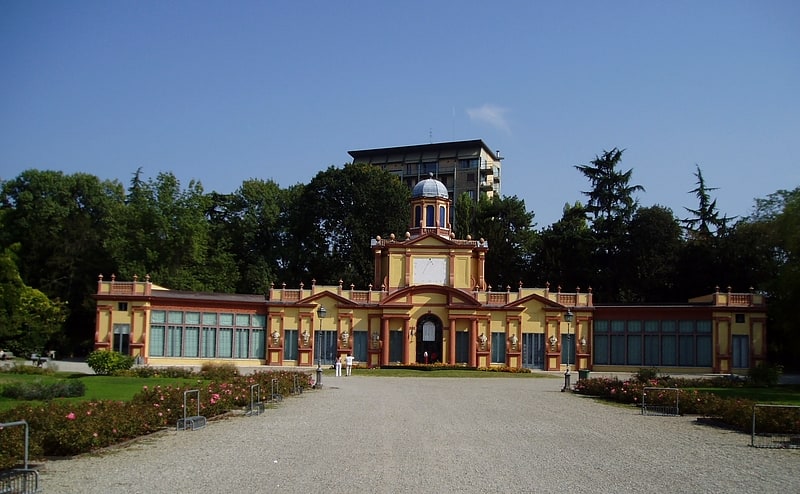
Also known as: Orto Botanico
Botanical garden in Modena, Italy. The Orto Botanico dell'Università di Modena e Reggio Emilia, also known as the Orto Botanico di Modena or formerly Hortus Botanicus Mutinensis, is a botanical garden operated by the University of Modena and Reggio Emilia. It is located next to the Garden Ducale, at viale Caduti in Guerra 127, Modena, Italy, and open weekdays during the warmer months except August. Admission is free.
The garden was established in 1758 by Duke Francesco III d'Este for medicinal plants, becoming part of the university in 1772. The garden is an irregular shape, almost 1 hectare in size, with several greenhouses (total area 300 m²) running in a line across the garden's center. It currently contains about 1,400 species plus a major herbarium. The principal outdoor areas are:
- "Montagnola" - "mountains" with an arboretum of almost 200 woody plants, including Abies cephalonica, Aesculus hippocastanum, Fagus sylvatica, Gleditsia triacanthos, Pinus wallichiana, Quercus robur, and Q. ilex.
- Parterre-School - over 2000 m², dating to 1772, principally flowerbeds arranged radially around a central pool with shrubs and herbaceous plants. It currently contains about 700 species, mainly European, including aquilegia, dianthus, iris (over 100 species), potentilla, and salvia.
- Lowlands - irregular flowerbeds, gravel paths, and stone sidewalks.
Greenhouses are as follows:
- Serre Ducale - the garden's most important building, built for winter storage of tender plants, recently adapted to also cultivate tropical species.
- Succulent Plant Greenhouse (mid 1980s) - primarily succulents.
- "Serretta" (1994) - miscellaneous (carnivorous plants, ferns, Orchidaceae, etc.)
Address: Viale Caduti in Guerra, 127, 41100 Modena
Museo della Figurina
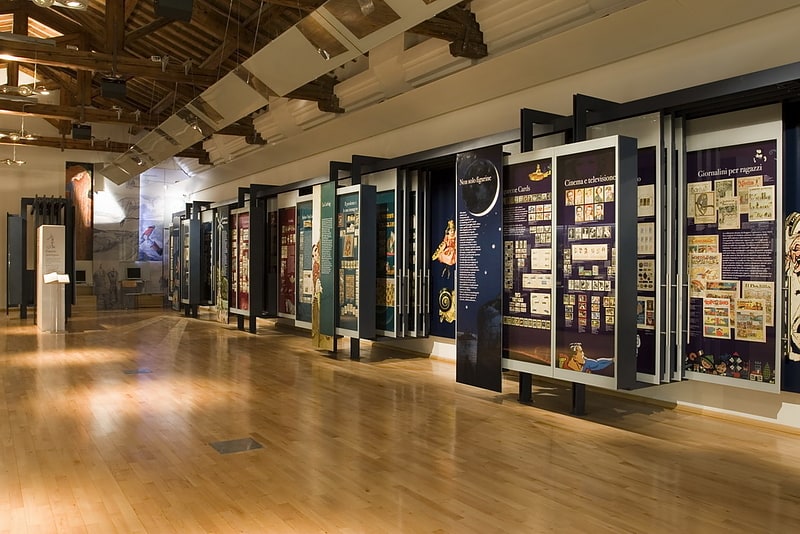
Also known as: Museo della figurina
The Museo della figurina is a museum dedicated to collectible cards. Opened on December 15, 2006, it is located inside Palazzo Santa Margherita, in Modena, Italy.[13]
Address: corso Canalgrande 103, 41121 Modena
San Bartolomeo
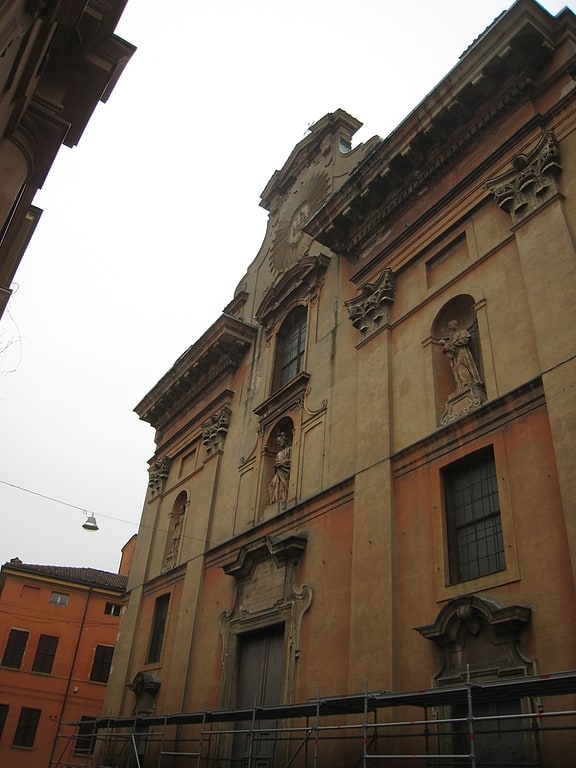
Church in Modena, Italy. San Bartolomeo is a Baroque church in Modena.[14]
Address: Via Camatta, 41100 Modena
San Vincenzo
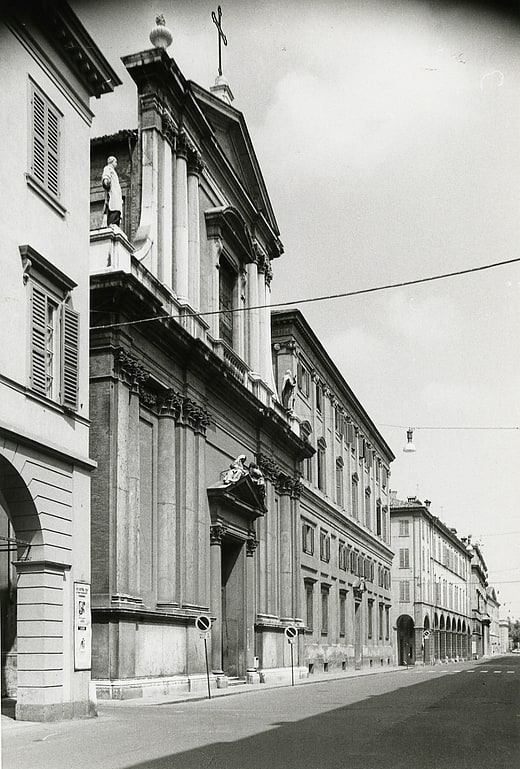
The church of San Vincenzo is a Baroque style, Roman Catholic church located on Corso Canalgrande, number 75 in Modena, Italy.[15]
Address: Via del Carmine 4, 41100 Modena